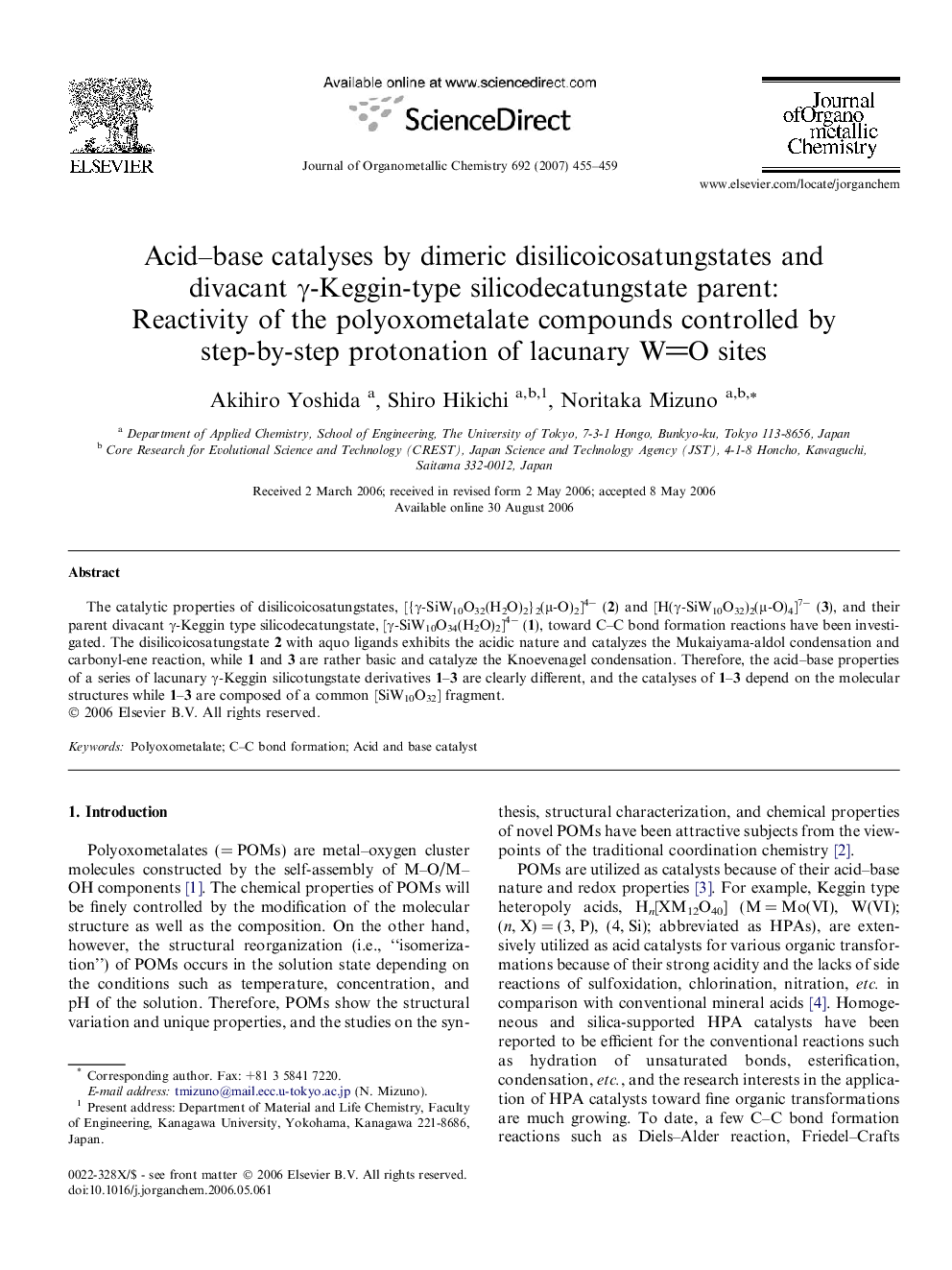| Article ID | Journal | Published Year | Pages | File Type |
|---|---|---|---|---|
| 1328337 | Journal of Organometallic Chemistry | 2007 | 5 Pages |
The catalytic properties of disilicoicosatungstates, [{γ-SiW10O32(H2O)2}2(μ-O)2]4− (2) and [H(γ-SiW10O32)2(μ-O)4]7− (3), and their parent divacant γ-Keggin type silicodecatungstate, [γ-SiW10O34(H2O)2]4− (1), toward C–C bond formation reactions have been investigated. The disilicoicosatungstate 2 with aquo ligands exhibits the acidic nature and catalyzes the Mukaiyama-aldol condensation and carbonyl-ene reaction, while 1 and 3 are rather basic and catalyze the Knoevenagel condensation. Therefore, the acid–base properties of a series of lacunary γ-Keggin silicotungstate derivatives 1–3 are clearly different, and the catalyses of 1–3 depend on the molecular structures while 1–3 are composed of a common [SiW10O32] fragment.
Graphical abstractThe catalytic properties of disilicoicosatungstates, [{γ-SiW10O32(H2O)2}2(μ-O)2]4− (2) and [H(γ-SiW10O32)2(μ-O)4]7− (3), and their parent divacant γ-Keggin type silicodecatungstate, [γ-SiW10O34(H2O)2]4− (1), toward C–C bond formation have been investigated. The aquo ligands containing 2 exhibits the acidic nature and catalyzes the Mukaiyama-aldol condensation, while 1 and 3 are rather basic and catalyze Knoevenagel condensation.Figure optionsDownload full-size imageDownload as PowerPoint slide
